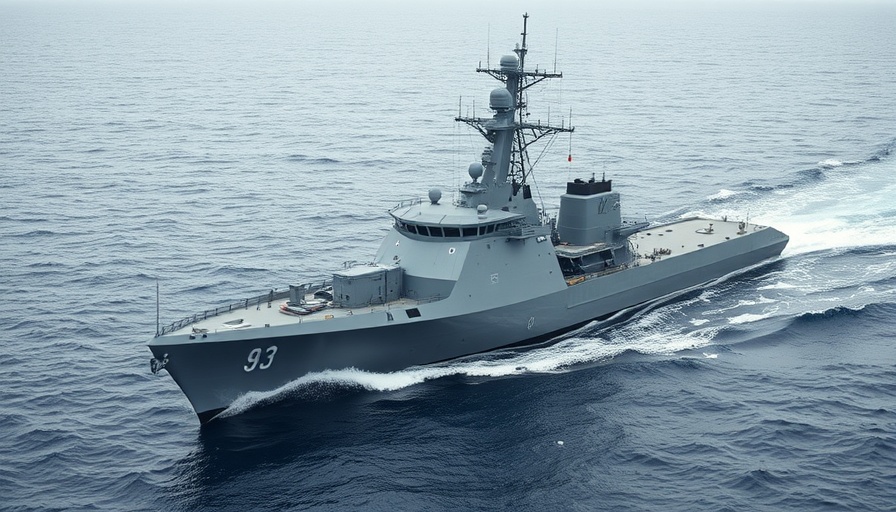
The USS Pierre: A Significant Milestone for the Navy
On July 11, 2025, the US Navy officially took possession of its newest Independence-variant littoral combat ship (LCS), the USS Pierre (LCS 38), marking a significant achievement in naval engineering and defense. This vessel represents the culmination of a two-decade procurement initiative involving dedicated naval personnel, industry partners, and extensive program management. The commissioning of the Pierre later this year in San Diego holds immense importance, not only for the Navy but also for the shipbuilding industry.
Pioneering Shipbuilding Efforts
The achievement of delivering the USS Pierre can be seen as a testament to the evolution and capabilities of America's mid-tier shipyards. As noted by Melissa Kirkendall, acting program executive officer for Unmanned and Small Combatants (PEO USC), this ship and her sister vessels have greatly enhanced the shipbuilding industrial base in the nation. Currently, Austal USA is constructing nine vessels for the Navy alongside one cutter for the Coast Guard, signaling a robust future for shipbuilding in the United States.
Performance Indicators and Future Missions
During its acceptance trials, the USS Pierre recorded the highest score among littoral combat ships in the last 15 years, showcasing its operational readiness and advanced capabilities. Designed for versatility and speed, the LCS is prepared to undertake essential missions such as maritime security, sea control, and enhanced forward presence in strategically significant regions. As these ships operate in coastal waters, their effectiveness in addressing modern threats is crucial for ensuring national security.
Exploring the LCS Class Design
The Independence-variant LCS, characterized by its trimaran-hull design, is one of two distinct classes created to fulfill the Navy's evolving requirements. This design enables superior maneuverability and speed, allowing it to operate effectively close to shorelines, a critical aspect of littoral warfare. Alongside the monohull Freedom-variant, produced by Lockheed Martin, the LCS class represents cutting-edge naval innovation aimed at enhancing naval capabilities in response to contemporary threats.
Looking Ahead: The Future of Naval Operations
The commissioning of the USS Pierre is not just a singular event but part of a broader trajectory toward strengthening the Navy’s maritime strategy. With the commissioning of new ships, the Navy can improve operational capabilities, improving its readiness for various scenarios, whether they are humanitarian missions or modern warfare. As international tensions continue to evolve, the Navy’s ability to adapt and strengthen its capabilities will be essential.
Community Impact: The Local Connection to Shipbuilding
For those in Mississippi and the surrounding region, the implications of the USS Pierre's commissioning reach far beyond the waves. The shipbuilding industry significantly contributes to local economic stability and job creation. Initiatives like these showcase the potential growth opportunities within local shipyards and associated industries, emphasizing the importance of supporting and investing in this vital sector.
Ultimately, the delivery of the USS Pierre serves as a reminder of the importance of innovation in shipbuilding and the ongoing commitment of the United States to maritime strength. As the Navy gears up for new missions with this latest vessel, the importance of sustaining local shipbuilding efforts is paramount.
Call to Action: Investing in Our Future Workforce
As we celebrate advancements like the USS Pierre, consider how you can contribute to our local shipbuilding community. Support initiatives that provide training and education in the marine industry to ensure a steady pipeline of skilled labor ready to tackle the challenges of modern warfare and ship construction.
 Add Row
Add Row  Add
Add 




Write A Comment